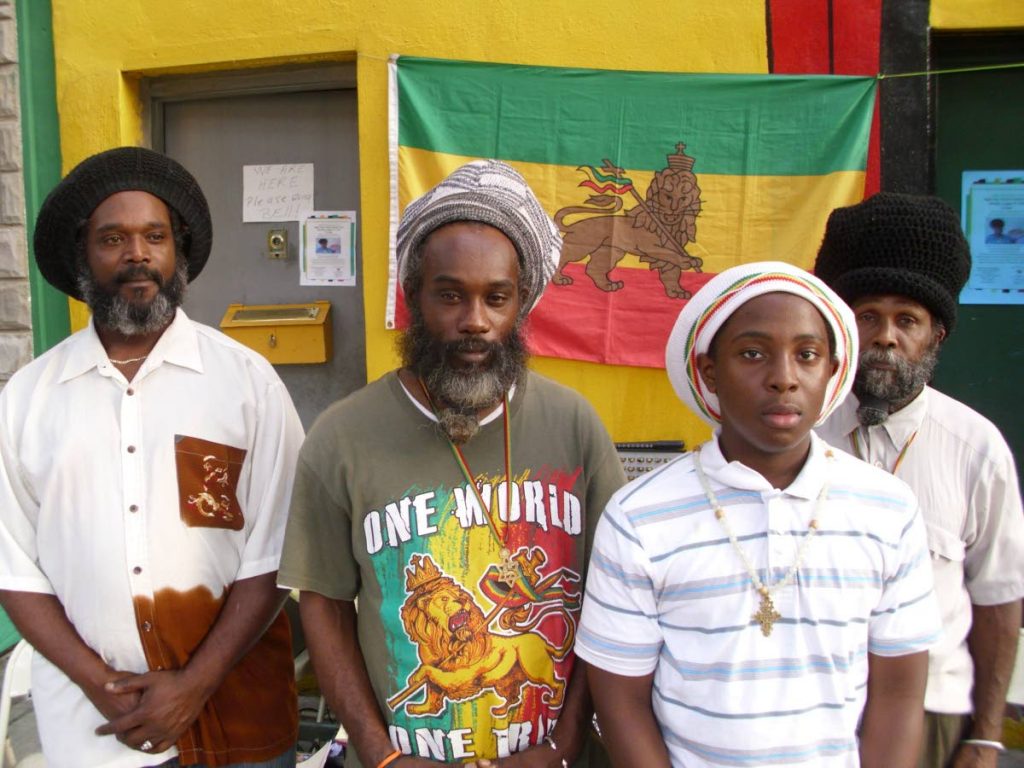Lecturer: Rastafari can help heal TT

MARSHELLE HASELEY
TRINIDADIAN writer VS Naipaul wrote about local Rastafarians in 1972, Tyehimba Salandy, sociologist and lecturer at UWI, St Augustine, noted in a lecture on Thursday last week.
Naipaul said, “New gods, imported from the Rastafarian cult of Jamaica, had made their appearance among us. Young, marijuana-doped blacks with matted hair stalked the streets. They symbolised the regression, the primitive impulses seething through the lower reaches of society. When I returned to TT eight years later, their numbers had multiplied...by then they had become something of a political force.”
In his lecture on the history of Rastafari in TT, organised by the National Trust, Salandy said “some early views of the movement, like Naipaul’s, were quite negative.”
But in chronicling the journey of the Rastafari movement in TT, Salandy gave recommendations for how principles of the movement could reap rewards for the country and the region.
He said the intention behind the presentation was to “explain the circumstance of the Rasta movement in TT, as well as the factors that caused the Black Power activists to transform into Rastafarians.”
The conference room at the Old Fire Station, Port of Spain, was filled to capacity. The audience included people from varying backgrounds, and perhaps one-third were from the Rastafarian community. A band of Rasta drummers accompanied by a flagman played at the door, and the aroma of essential oils filled the air. Salandy began by discussing the visit of Ethiopian Emperor Haile Selassie I in April 1966, pointing out, “Some of the persons who went to see him were inspired to later become Rastafarians.”
He also acknowledged the regional origins of the movement.
“Tribute has to be paid to Jamaica for being the originator of Rastafarian culture in the Caribbean. The Rasta movement that emerged in the 1930s was a reaction and resistance to slavery, colonialism, the deep race, colour and class hierarchies. It was also a challenge to British colonialism, the plantation system, as well as the British-oriented mulatto and black middle-class values.”
Salandy made reference to the movement being heavily influenced by “Marcus Garvey and the Garvey movement, Hinduism, the 1930 coronation of Emperor Haile Selassie I, African spiritual traditions such as Kumina, Pocomania, and Judaeo-Christianity.”
However, he noted, it did not take form in TT until the late 1960s, after the Black Power movement.
The Rastafarian community was held in contempt, ridiculed, villainised, frowned upon, and seen as a health threat. Salandy quoted a newspaper publication from the 1970s, which sneered: “Until some recognised sociologist explains to us exactly what motivates the Rasta cult, and why it has proliferated from its Jamaican origins through the West Indies, we will remain highly sceptical of its social value, and unsympathetic to its dubious objectives, spiritual or otherwise. There is nothing constructive that we can see this unkempt, pot-smoking group of dreamers adding to our society, or the progress of our nation.”
In addition to this “othering” of the community, Salandy explored the brutality and discrimination experienced by the group. Rastafarians were imprisoned on unreasonable grounds and suffered police brutality, included cutting off their dreadlocks. Additionally, Rasta students were barred from enrolling in some traditional high schools. He cited the 2004 case of Kalifa Logan as an instance of discrimination in the education system.
But the crux of his presentation involved issues revolving around “blackness” and the attitudes that society attached to African phenotypes, which were thought of, even by those of African descent, to be “less than” and ugly. These points of view, which became entrenched in Caribbean culture and attitudes, were observed by Barbadian writer George Lamming. who wrote, “From the onset of Columbus’ journey to the new world, racism became the bedrock of Caribbean society, that for the next few centuries would be determined by force.”
Salandy added that it was not just Europeans who arrived in the New World, but capitalist, bourgeois, Christian, European males. It is by this European standard, phenotype and culture that the hierarchies, biases and points of privilege were instituted in the New World space.
Rastafari differed drastically from the European standard, and was thus seen as “other” and inferior.
It is the concept of “othering,” Salandy said, that resulted in a systemic challenge to African cultural retention through outlawing drums, Shouter Baptists, voodoo and obeah. Additionally, laws limited the ability of even wealthy people of African descent to buy large areas of land.
Salandy then discussed the triumph of Rastafari, by spreading its principles and attitudes through members of the community who gained popularity, such as Bob Marley. He also spoke about Rastafari being embraced and adopted by TT citizens of East Indian descent, and in other islands within the region. Over time, members of the community were no longer widely seen as layabouts, but were recognised as catalysts of change.
Contemporary Rastas who are making an impact include people such as the Jamaican poet and educator Mutabaruka, who has been working with others on decolonisation from Judaeo-Christian interpretations of Rastafari.
Today universal principles of Rastafari such as healthy “ital” eating have become widespread, and are presented in mainstream culture as vegetarianism and veganism. Marijuana smoking, farming and consumption are now legal in the UK, US and parts of the Caribbean, including Jamaica. The benefits of marijuana are now discussed and the plant is now seen as being of great value. Practices such as yoga and minimalism are now part of the majority culture and most dominantly practices of the contemporary elite.
Salandy closed with a call to action, asking for reparation and greater inclusion and representation of people from the Rastafari communities in mainstream media.

Comments
"Lecturer: Rastafari can help heal TT"